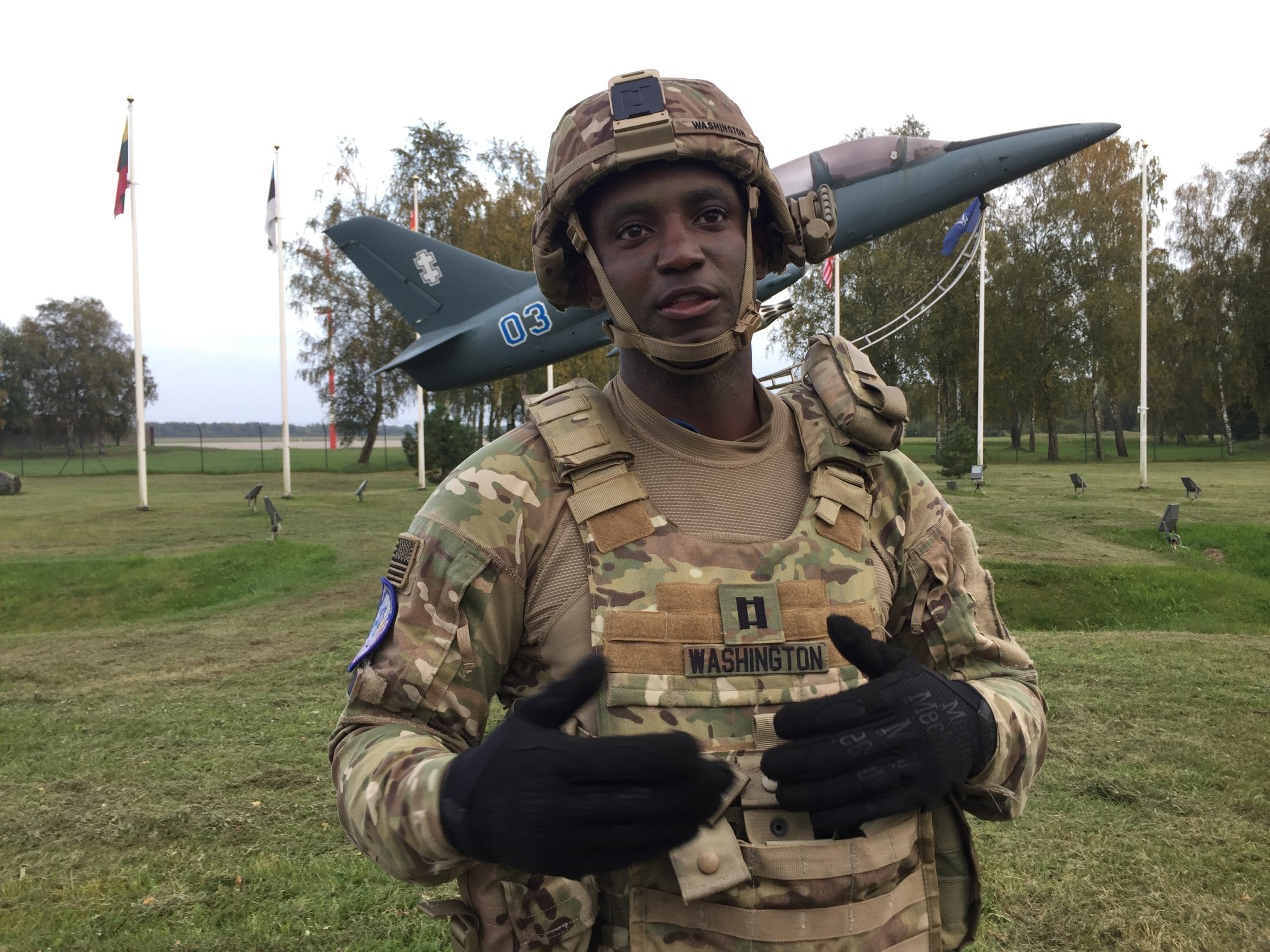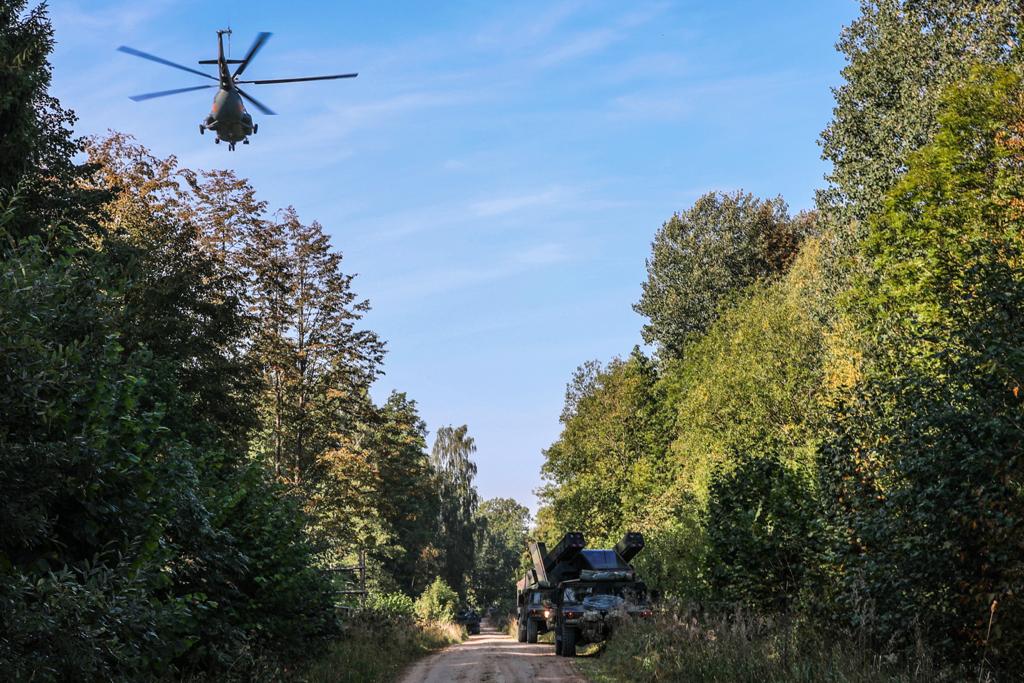SIAULIAI AIR BASE, Lithuania — With smeared camouflage paint faintly visible on his face after hiding anti-aircraft batteries in the woods, U.S. Army Capt. Waverly Washington realized the NATO concept of common defense is not about having the most advanced technology.
It’s about learning how to draw on each partner’s capabilities, whether new or old.
“It’s easy to come into a fight and say ‘This is the way that the Americans do it,’ but we’re not gonna be fighting alone,” he told the Washington Examiner at Lithuania’s Siauliai Air Base, which is hosting the multinational air defense exercise Tobruq Legacy Sept. 12-27.
The 10 nations participating in this seventh iteration practiced bringing together modern Western equipment and decades-old Soviet-era equipment in one aerial picture fed to a command and control center in the Lithuanian city of Kaunas. Joining traditional NATO countries, Germany, France, and Italy, were former Soviet republics in the Baltics, Lithuania, Estonia, and Latvia. Participating former Warsaw Pact countries included Poland, Hungary, the Czech Republic, and Slovakia.
“We have weapons systems which are not fitting to each other right from the beginning,” the exercise chief, German Air Force Lt. Col. Thorsten Stratemann, told the Washington Examiner.
“We have, for example, highly sophisticated systems built in the West, and we have operating systems built by the Russians years ago, and they cannot talk to each other,” he explained.

During the exercise, U.S. Avenger short-range air defense systems fanned out into farmland in a 15-mile radius around the base with soldiers in face paint setting up camo nets to conceal their position.
At one point, that led to curious Lithuanian drivers pulling over to inspect the anti-aircraft weaponry up close until scared off by soldiers armed with M4 rifles.
On another occasion, a farmer who gave permission for soldiers to practice on his land continued about his business, dumping a large pile of fertilizing manure near a concealed position, presenting soldiers with a rather unexpected and unpleasant environmental challenge for an entire 12-hour shift.
“We want to work in foreign areas,” Washington said. “If it ever came to any type of conflict, you’re not going to be fighting in your backyard. You’re potentially fighting somewhere you don’t know.”
The Baltic nations share borders with Russia and can be hit by long-range Russian ballistic missiles. The heavily fortified Russian exclave of Kaliningrad, which borders Lithuania and Poland, has high-end S-400 anti-aircraft batteries that make it more difficult to reinforce the region in the event of a conflict.
Brig. Gen. Greg Brady, commanding general for the 10th Army Air Missile Defense Command for U.S. Army Europe, told the Washington Examiner that the exercise is designed to prepare for threats unique to the region.
“This is a Baltics exercise. So, we plan for a full spectrum of threats,” he acknowledged.
“With more countries, we have greater capacity,” he said. “There isn’t one air and missile defense system that can defeat every threat out there. So, every country brings a different capability. And when you integrate that, you improve your capacity.”
He added: “That is a level of deterrence right there.”

Every day new “enemy air threats” such as virtual and real fixed-wing aircraft, helicopters, and unmanned aerial systems would test the ability of all the systems to interact effectively. Troops reacted with their systems in combined operations, traveling and working together.
U.S. Army Sgt 1st Class Alanmarco Cruz from Los Angeles, California, saw mock enemy MI-8 helicopters fly over him while protecting a Lithuanian mechanized battalion on a 100-mile convoy.
“As the convoy kept moving, we engaged on the move,” Cruz said of simulation fires against the Soviet-era helicopters, sending reports back to Lithuanian commanders at a command-and-control center.
Small arms fire was also simulated near the convoy to test the reaction of the Lithuanians and Americans.
“The Lithuanians would react, and we would still be searching and scanning the air,” Ruiz explained of gunners on the Avenger’s turrets, which can fire eight stinger missiles and use infrared technology at night.
The exercise commander, Stratemann, said years of practice have paid off, and this year’s Tobruq Legacy yielded progress and lessons learned.
“It took us way less time to connect the technical systems together,” he said.
Commanders also realized which systems can talk to each with the right bypasses and manual adjustments, and which cannot.
“So from that perspective, this exercise was pretty good,” he said. “We achieved a lot in a very short time in comparison to the other exercises.”

